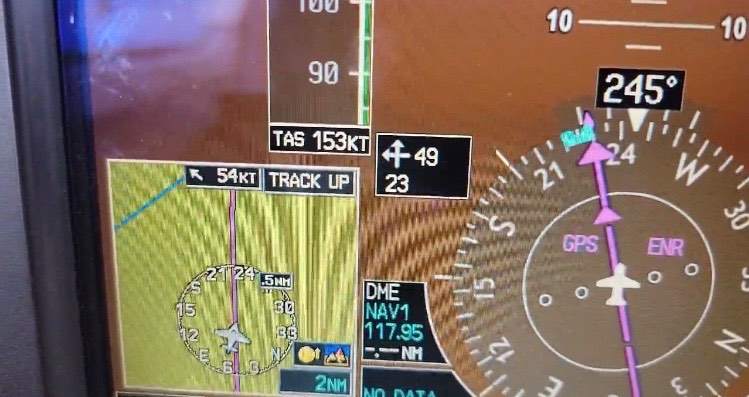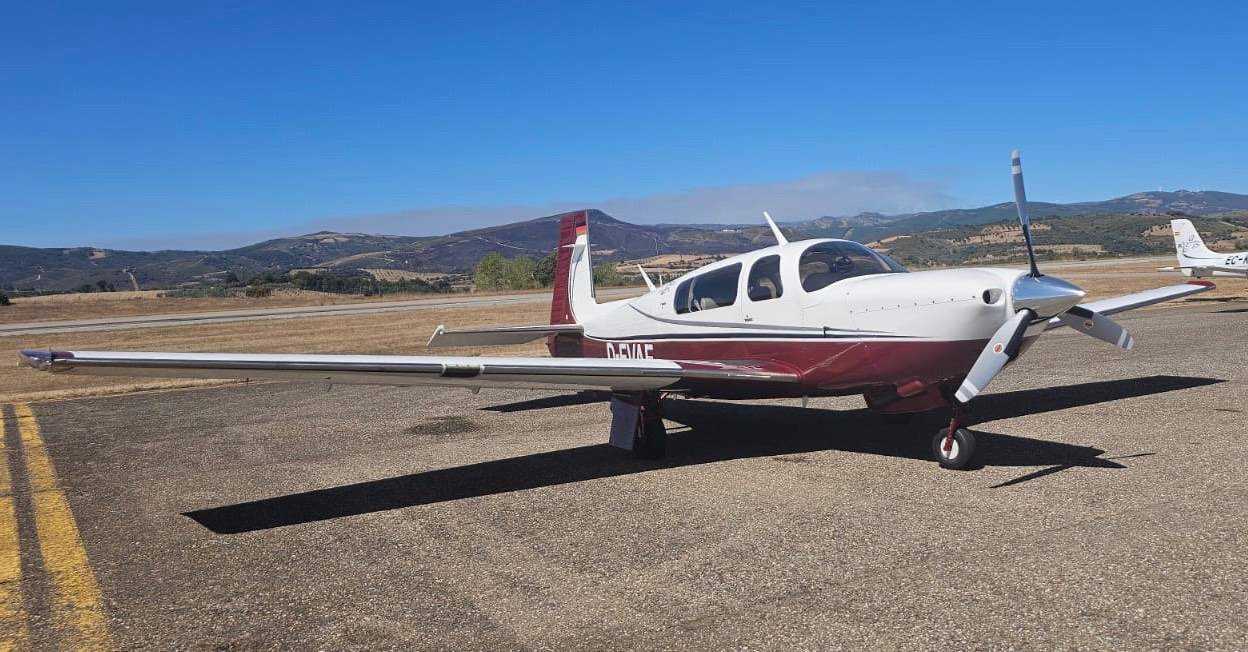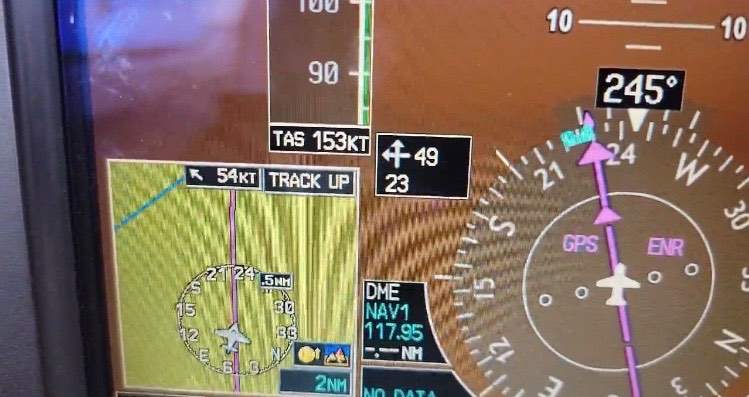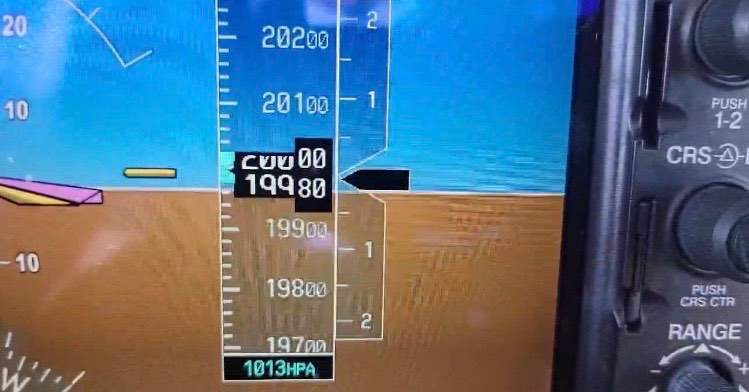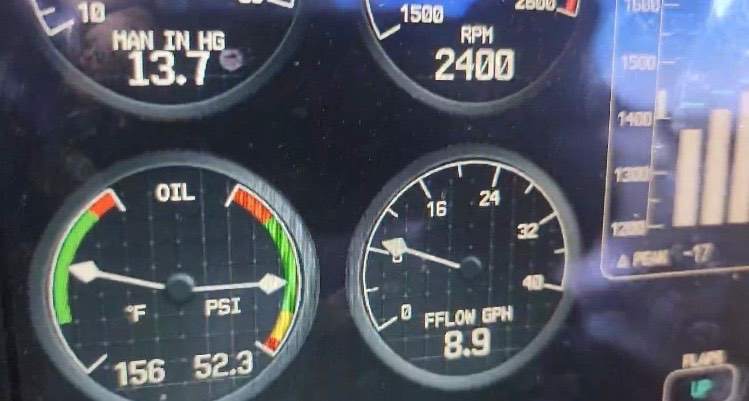
Jose Jo
Verified Member-
Posts
23 -
Joined
-
Last visited
Recent Profile Visitors
The recent visitors block is disabled and is not being shown to other users.
Jose Jo's Achievements
-
This is our Ovation, we had only a few hours on it. I am a newbie so don't trust anything you see here. Its a 280Hp (derated from 310Hp, Europe as usual ...) The numbers are not impressive and we don't get even close to book numbers but it has FIKI so that will be a penalty of 8-10Kts; maybe also I am not doing things right. What's impressive is that with our Monroe tanks 130USG and that fuel flow we could easily do more than 2000Nm weather and bladder permitting. In Europe it IS very important to be able to go high for many reasons that don't belong here.
-
Epilogue to the purchase of a Mooney Ovation in Europe
Jose Jo replied to Jose Jo's topic in General Mooney Talk
Hi Matthias so upset I missed your message, something is wrong with my settings as I don't receive the alerts. Certainly, I will do that. Not training a lot (see post below) as the starter adapter failed and the plane was stuck for a while, also foul weather here, I guess the same everywhere. We changed it ourselves it was an easy fix, Justus arranged everything; we also took out the old Iskar and replaced it with a new Hartzell which is far better. Self learning but no other choice, If I am very strict with the numbers it lands very well, the LHS is incredible. I had 2-3 benign bounces on the mains and still a smooth landing just holding the nosewheel up. Once again I thank everybody for their support -
Epilogue to the purchase of a Mooney Ovation in Europe
Jose Jo replied to Jose Jo's topic in General Mooney Talk
thank you very much, I missed your messages for unknown reasons. I don't have a clue about the panels, they came with the plane and Justus just changed a pump, the other one was working. Interesting, we share the same background but you are in the Paradise of aviation and I am in the Purgatory, I haven't been able to find a single Ovation instructor in the whole of Spain and Portugal. I am not making the mistake I made with the Cirrus taking a non cirrus instructor was a total disaster and I had to unlearn most of the things. Now unfortunately I am teaching myself to read and to write...the Ovation language. Doing fine so far but I would also need 38h with a good instructor. -
Epilogue to the purchase of a Mooney Ovation in Europe
Jose Jo replied to Jose Jo's topic in General Mooney Talk
sorry I missed your reply, I didn't get any email warnings. In my opinion, with high performance aircraft we have to handle many adverse conditions including but not limited to cold, heat, exhaustion, dehydration, stress, fatigue etc. Even at lower altitudes the body does perceive a threat when oxygen reduces even though there is no danger yet. I feel that much more attention should be derived towards physical and mental fitness. we spend a lot of time and energy concentrating on complex expensive oxygen systems which are great when they work......let's say your own body is the best backup system in case of oxygen supply failure and this is not far fetched. A friend of mine, an air hostess, saved everybody on board crossing the Atlantic when the airline suffered a slow decompression and everybody lost consciousness while she struggled to wake up the pilots and give them supplemental oxygen. I have seen a heavy smoker pilot struggle at 5000 ft, and a seasoned pilot in trouble having to climb to 14000´due to a weather trap in a 172. We always carry enough oxygen and I use 100% of the time a pulse oximeter but we always run tests to measure our capacity in case of emergency. In this particular flight at FL165-170 the other pilot, a seasoned young commercial pilot used to transatlantic ferries had a keen interest in measuring his capabilities under extreme conditions in a transatlantic ferry flight. The outcome wasn't good, with no visible signs of hypoxia he would turn around the last 2 numbers of the frequency given by ATC: his saturation was less than 78, quite critical and completely impaired for flight. In my turn I managed to keep about 93-94% for 15 minutes (enough time for an emergency descent) with a HR of about 74. Nothing superhuman, just that I trained many years as a free diver and learnt many breathing techniques usually derived from yoga. I was present when Pipin descended to 150m holding his breath and establishing the world record of apnea, incredible feat that demonstrates that human capacities are limitless. With a bit of training anybody can dramatically improve hypoxia tolerance. I handle hypoxia and vital signs almost every day in my work, but I am no expert at all in aviation physiology so maybe an expert could tell us much more. Yes, now I take the trim almost all the way up and have reduced considerably the speeds as I am alone, little fuel and no luggage. At 68Kts over the threshold it still floats quite a bit but the landings are very smooth. -
Epilogue to the purchase of a Mooney Ovation in Europe
Jose Jo posted a topic in General Mooney Talk
Finally we have our Mooney Ovation 2GX registered and in flight. What could have been a nightmare was just a bit of insomnia thanks to this forum and specially Justus Schiedek from ACG-Aircraft in Allendorf, Matthias Arnold and our instructor Walter Adam from Speyer. As mentioned in an earlier post, the plane was found quite neglected and very poorly maintained but without fundamental flaws: the engine was found to be sound by a prebuy inspection done by Justus (everybody should do this, I was given the tip by Matthias). Justus found many deficiencies that were fixable but not without some time and expense: paint job, landing gear adjustments, FIKI failures, speed brakes not deploying, stall warning heat inoperative, and some others. It didn’t have WAAS or ADSB; on the good side it was full FIKI and 130USG Monroe tanks. 310Hp STC had been removed for registration in Europe, insane bureaucracy but that’s how it is over here. Documents and ownership transfer were a bit complex and meanwhile the plane was at Allendorf for the speed brakes, FIKI, LHS, FLARM, WAAS (which it didn't have and required GIA63W sourced by our mechanic), updates, stall warning heat, and paint and ceramic coating. The result is impressive and for sure it is now one of the outstanding Ovations in Europe. We would inform of the contingencies after our trining flights (like a stuck electric trim, deviating a bit to the left and other minor issues) and everything would be fixed early in the morning before the next training session. After a training period with Walter Adam at Speyer, at least I am able to land the plane on a long runway and good weather without breaking it; a lot more training is required as I am a relatively new pilot and I transitioned from a PA-28 to a Cirrus (recently) and now to this. Adam is the most incredible instructor, he taught me to be very safe, fly by the numbers and use the guidance of the manifold pressure. He told us the Ovation is a great short field performer if you are well trained and alert, I know many of you might dissent. We came all the way back to Portugal at one go, FL200, 8,9GPH and 153TAS, quite impressive and probably one of the few certified non turbo single engine piston able to achieve this. The settings could have been better but the engine was safe. Range showed 2200Nm with a tailwind and the tanks were far from full. We are newbies but we feel safer high up, there are many advantages to flying high and far that non European pilots might not understand like fuel unavailable or expensive, airports that close hours before sunset, rapidly changing weather, military zones, getting easy clearance from ATC (they thought we were a jet ) and many others. We didn't have masks but our saturation was good and we had backup. I can tolerate well 17000ft without supplemental oxygen with a saturation of 94 and a pulse of 74 where neurological deficits are not possible (20min). The most important factor in high altitude is the physical and mental capacity of the pilot and correct breathing. I do constant monitoring with alarm. At FL200, 153Kts and 8,9GPH you go incredible distances with good winds. Once again we come to the philosophical debate around Mooney, Cirrus, Bonanza and others. We had a bad experience with our recent Cirrus, a terrible instructor (non Cirrus) due to the difficulty and distance to access a certified one. We were cheated on the purchase and the plane had many deficiencies that were later corrected to the last minute detail. It flies very well and is comfortable, I struggle to get more than 156Kts on any setting and the range is limited to 81USG on a G2. It's stable in turbulence and a decent short field performer (our runway is 650m and approach speeds around 80Kts). As many pilots say, it depends on your mission. An Ovation is for an aviator and the Cirrus is more for business and family travel and medium or short distances. In any case as we cannot access a G5 G1000 FIKI, we chose this route selling the G2. I like to fly far without stopping if on a mission and stopping frequently if on tourism and leisure. This planes flies beautifully, no problem with that but landing is a different issue. The nose up landing is new, it is not so easy to trim it up all the way so quickly and in a go around or touch and go (which Walter doesn't recommend ) a lot of pressure is required on the yoke, not too difficult but muscle required for now !. In any case it is a beautiful bird, quite unique in general aviation and a real personal airliner as we have already proven in our first trip of 818Nm. Thank you all for your invaluable help -
all Mooney instructors I met say its doable but with a lot of training. We have 3 Cirrus in the field and we manage, I can swear it is more difficult to land than a Mooney. Unfortunately this is Europe, no options in my area, you take it or quit aviation. My Archer III lands at 65 and uses less than 1000ft if I am alert.
-
couldn't agree more, thank you
-
My Archer III runs on mogas, lands anywhere and is very cheap to run (compared to others), it has was, WX-500 and much more. It's close to perfect. Only thing time goes by and you look at new horizons. The weather here is terrible and I need much more range to get anywhere.
-
thank you for your valuable insights I am new to your community but I might be soon one of you as I am in the dealing process for an Ovation. I am also a newbie to high performance (I come from an Archer) and recently got my Embark for Cirrus so I am not explaining anything here about landing in short fields but about my struggles with short fields. If you live in Europe, mainly in the south, you will find out that general aviation is a constant struggle against the system. We don't have your privileges or your airfields. Airfields are scarce and politically designed without ever asking pilots or experts. In short this means many of our airfields are very short and placed in difficult areas. My airfield is 600m, 1980Ft with obstacles. Several Cirrus and Lancair land there not without difficulties. My instructor took me there In an SR22 G2 and said 75Kts. That's all. It's below POH and maybe inadequate for a beginner with only a handful of hours. I nailed the numbers but I was instructed to kill the throttle over the threshold and in the flare the speed collapsed rapidly. Tanks were full 81USG and we had some extra load as well. The result is that it was a hard landing without any bounce and the plane stopped in less than 800ft (maybe 1000ft from the threshold) as it had no energy left. I still don't know why he didn't tell me to go around (he was very busy yelling at me ha ha !). So lesson learnt by myself and what I do now is to come in with the POH (77Kts) and keep a tiny bit of power in the flare which works well. The runway has some obstacles so the amount of energy lost in a steep approach is huge and could lead to a stall and damage to the aircraft. Handling an Ovation in this scenario might be quite different, I know it can be done at 65-70Kts when light and hopefully I will have the right instructor.
-
yes, I agree. It is not my goal to do 1000Nm trips but to be able to do them if need be. As I said before, I live right next to the Atlantic so if you are going anywhere west you should have the 1000Nm capability and pray you never need it. This is Europe, and aeronautical life is not easy: no fuel, bureaucracy, PPR, handling, high prices, short runways etc etc, sometimes you are much better off skipping that type of airport even if it means 900Nm. Furthermore, its also a pleasure to do a stop for fun, to relax or just because fuel is unavailable or too expensive; then you just continue with your 1000Nm range.
-
WILCO thank you
-
I have friends that have done it, mainly Canary Islands and Madeira but also Azores. As far as I know none of them were adequately equipped. A cirrus like the one I fly (SR22 G2 81GAL) went to Canary Islands direct (maybe not a great idea to stop at Morocco), luggage, life raft 4 on board full fuel (?). A more reasonable option would be Portimao-Madeira or Cascais-Madeira (Cascais has become very difficult), then to Azores. There is also a special permit to go beyond MTOW, I think I wouldn't take that option. Yes, I agree with what you say.
-
Not quite so, the POH had to be rectified because it was more for marketing than for real travel. Most Cirrus owners don't get those numbers and we have tried a few. Maybe the newer ones are more adjusted but then you are beyond a million dollars..... Then, older models (2006) start losing performance. Our POH gives almost 1100Nm at 55% which is ridiculous, with 700Nm you should be seriously planning to land ASAP. We have a great ocean a few miles away with Azores, Madeira and Canary Islands so if you go there there is no option to stop, anyhow its good to have it available even if you don't use often. Thank you, I agree with what you say.
-
Hi Sue, Sorry I missed your message. Thank you for your kind offer; sure I would love to know about it
-
that's a lot !, is it possible to fly a turbo at, lets say, 55% power ?



